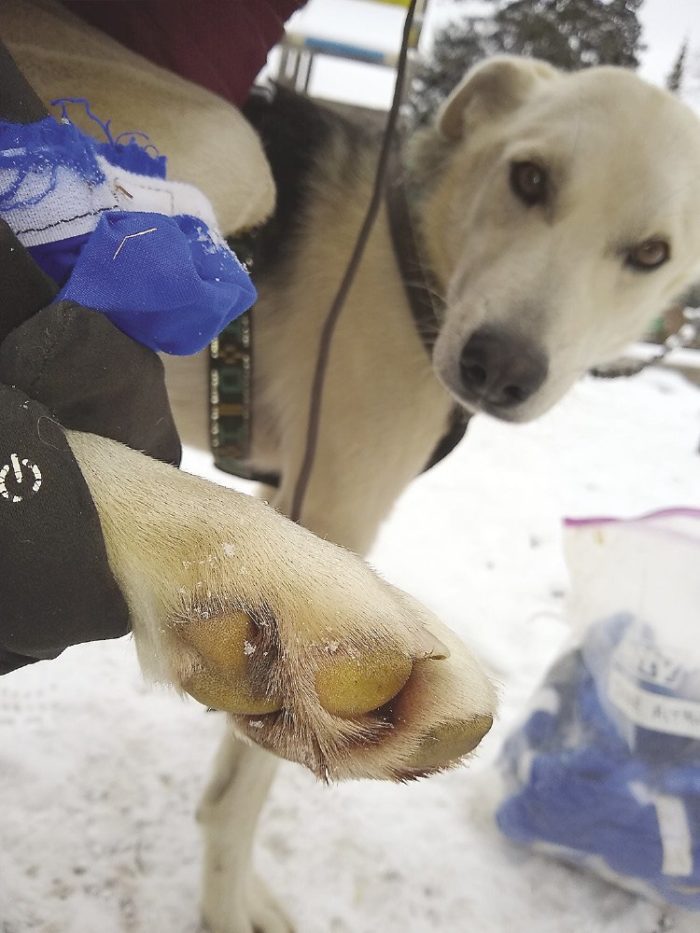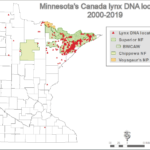Mushers pay a lot of attention to their dogs’ feet. When buying or breeding a sled dog, we often ask, “Do they have good feet?” Ideally, a good racing dog has tough feet, because their feet endure a lot. This year, the conditions on the road and trail have been particularly hard on our dogs’ feet and the dogs with really good feet stand out.
In the fall, we train the dogs on trails and gravel roads. In September and October, the runs are short and the trails are soft, so we see little effect on the paws. By the end of October, without snow to soften the blow, the gravel became a treacherous surface on which to run. By early November we started booting dogs as small scrapes and sores on the dogs’ pads needed to be protected and healed. Each run starts with a foot inspection. Any open spots or cracks in the skin require a special ointment.
Dogs with especially bad feet get a set of double booties on each paw because the frozen gravel shreds through booties like they are made out of paper. By the time the dog returns from a 15-mile run, the outer set of booties has worn through. At a dollar a booty, the cost has been adding up.
Most booties these days are made from cordura, a nylon-based fabric that seems fairly tough and doesn’t absorb much water. Mushers once made fleece booties, but my experience with fleece found it to stretch and absorb water until quite frozen and floppy. I tried sewing booties out of denim this fall, but denim was no match for gravel, and my hard work came back from one run in threads.
Snow will bring a different set of challenges. When the dogs are running on fresh snow, ice balls form between their toes. Again, booting is the only surefire way to prevent a problem. Ice balls can cause splits which again require salve, more consistent booting with every run and time to heal.
In a race, we usually boot every paw, especially in a longer race because we don’t want any paw problems that would cause worse problems later on. But, sled dogs also sweat through their feet, so if conditions are warm—as in temperatures above freezing, we might decide to leave boots off, because overheating would be a worse problem.
In the winter, regular paw care consists of trimming paw hair to help prevent ice balls, trimming toe nails and constant paw inspections. The feet on which they run are a big part of the picture. Funny though, that a dog with great feet requires very little but basic maintenance. While we booty 75 percent of the team daily right now, the other 25 percent have perfect feet, tough feet, feet that require nothing—perhaps why this is such an important quality of a great sled dog.
While we wait for more snow, the cold has set up the trails nicely. A thick layer of ice has coated Mush Lake and the surrounding swamps. It might be a year when we can run sleds on the lakes before the trails.
We signed up for races, which will include: two teams in the Gunflint Mail Run, the UP200 and the Can-Am Crown in Maine. We will also be giving rides at Bearskin Lodge again this year for lodge guests and outside visitors.
As of now, we continue to train with the ATV, but perhaps by the time this issue comes to print, we will have transferred to sleds, and that’s when the fun really begins.




